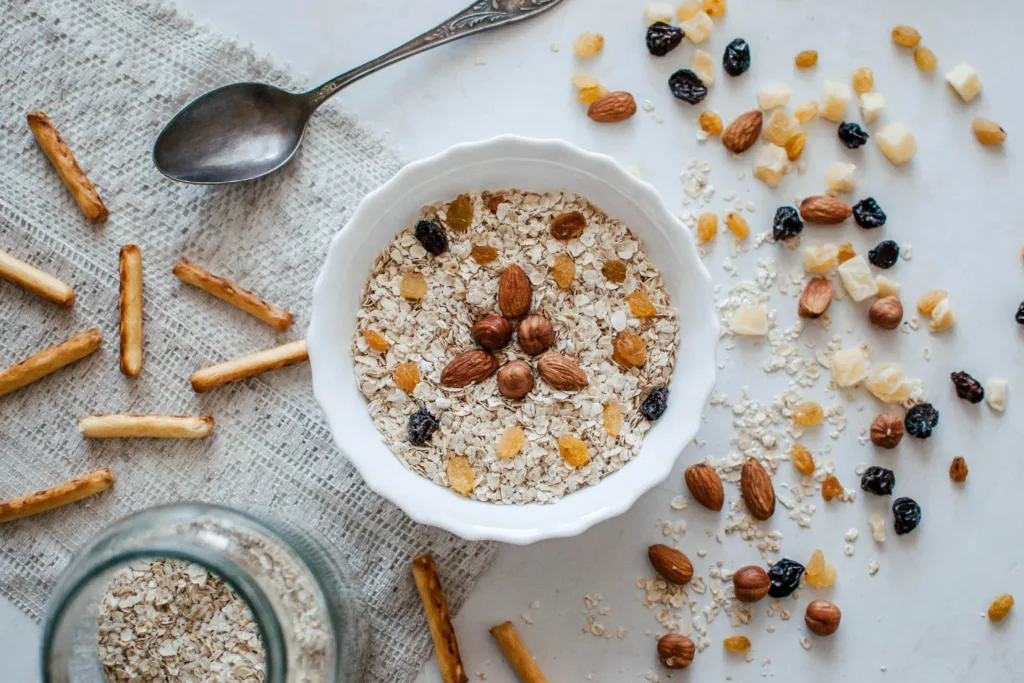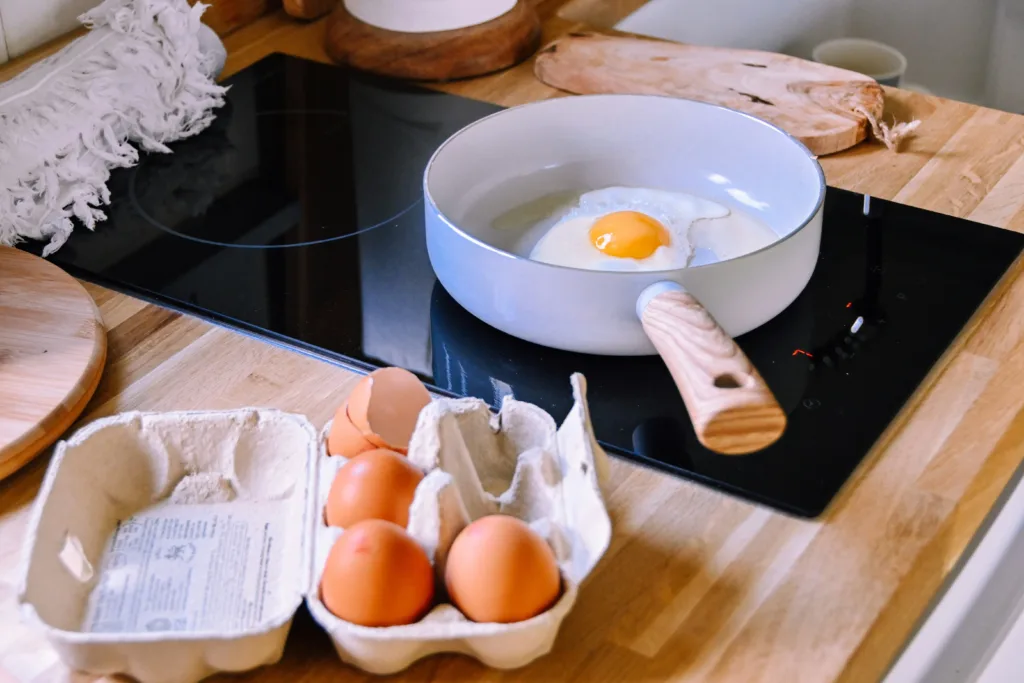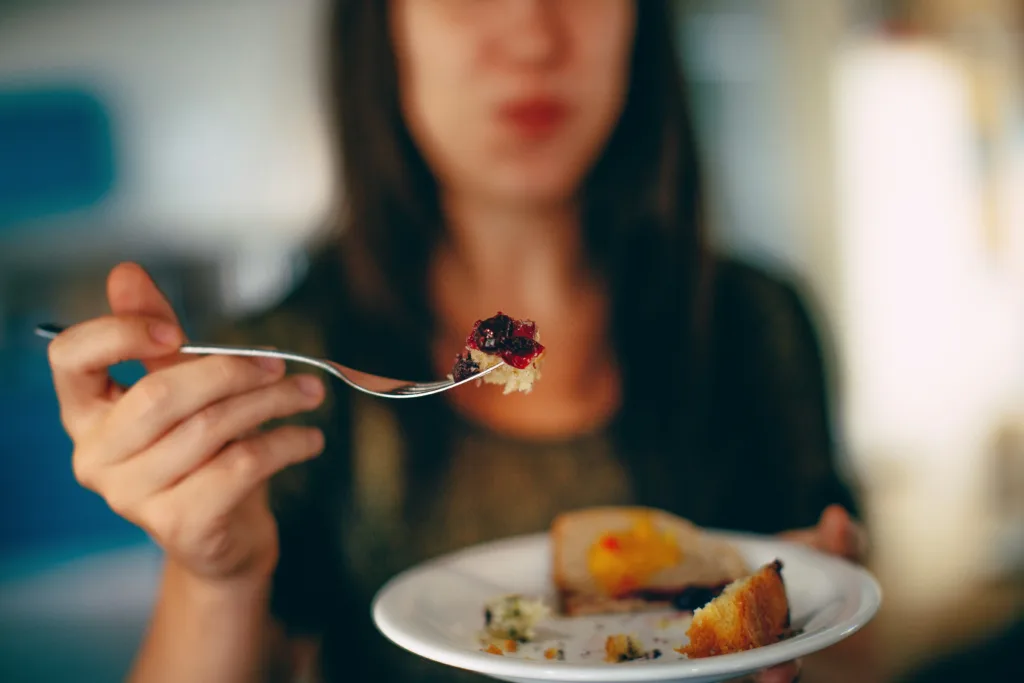Managing gestational diabetes can feel like a lot to take in, especially when you’re already adjusting to the many changes pregnancy brings. This article breaks down straightforward meal planning strategies to keep your blood sugar steady while still enjoying tasty, nourishing food throughout your pregnancy. You’ll find practical tips on what to eat, what to avoid, and even sample menus to make meal prep less stressful.
If you’re someone who likes to keep things organized, you’ll appreciate how ReciMe simplifies meal planning. It lets you save recipes from all over – Instagram, TikTok, Pinterest – and instantly turns them into grocery lists sorted by aisle. That means less time juggling meal ideas and more time focusing on your health. Grab ReciMe now, take charge of your nutrition, and let’s get into how you can manage gestational diabetes with food that works for you.


What Is Gestational Diabetes?
Gestational diabetes happens when your body has a harder time handling blood sugar during pregnancy. It usually shows up in the second half of pregnancy, when hormones are doing their thing and making insulin less effective. That means sugar hangs out in your bloodstream longer than it should, which isn’t ideal for you or the baby. The good news? It’s totally manageable. With a few smart food choices and some light lifestyle tweaks, most people can keep their blood sugar in a healthy range through the rest of pregnancy – no drama required.

Can Diet Help Manage Gestational Diabetes?
Definitely. What you eat plays a big role in keeping your blood sugar steady. But this isn’t about strict meal plans or giving up carbs – it’s about finding a rhythm that works for your body. The goal is to build balanced meals with a mix of carbs, protein, and healthy fats, and to eat consistently throughout the day. That means smaller, regular meals and snacks to avoid those sudden spikes (or crashes).
And here’s the part that surprises people – you can still eat well and enjoy your food. Swapping white rice for brown, pairing fruit with something like peanut butter, or leaning into fiber-rich veggies can make a real difference without making you feel restricted. The aim isn’t perfection – it’s steady energy, fewer sugar swings, and meals that actually leave you satisfied. Simple, doable, and kind to your future self.
Sample 7-Day Gestational Diabetes Meal Plan
Managing gestational diabetes doesn’t mean giving up the food you love or feeling boxed into a rigid diet. This 7-day plan is all about smart, steady meals that help keep blood sugar in check – without sacrificing comfort, flavor, or variety. Each day includes balanced breakfasts, filling lunches, easy dinners, and snack ideas that actually help you get through the day. No over-complicating, no calorie spreadsheets – just meals that work.
Day 1
Ease into the week with a meal lineup that’s familiar but far from boring – comforting flavors and smart combos to keep your blood sugar calm and steady.
- Breakfast: Start with a creamy zucchini probiotic yogurt bowl – smooth, lightly sweet, and full of fiber. Add a crisp, juicy apple for extra crunch and a little natural sugar. It’s one of those meals that feels like breakfast and dessert rolled into one, minus the crash.
- Lunch: Grilled chicken breast over mixed greens like lettuce, cucumber, and tomato, topped with a light dressing and 1-2 tablespoons of whole-grain croutons for crunch. A side of plain low-fat yogurt and a fresh piece of fruit rounds it out without tipping the sugar scale.
- Dinner: Oven-baked salmon with a squeeze of lemon and some chopped herbs, served with brown rice and steamed green beans tossed in a little margarine.
- Snack Ideas: A small bowl of probiotic yogurt or a 10-12 mixed nuts you can grab on the go.
Day 2
Bright, fresh, and full of texture – this day is all about balancing sweetness and protein with meals that keep you energized without the crash.
- Breakfast: Two slices of toasted whole-grain bread spread with 1-2 teaspoons of peanut butter, plus a 1/2 cup of fresh berries. The berries add fiber and antioxidants, and the nut butter helps slow digestion – a win for blood sugar control and morning hunger.
- Lunch: Quinoa salad with black beans, 1/2 cup berries, and fresh herbs. Serve it with half a whole-wheat pita and hummus for a meal that feels bright, filling, and not the least bit heavy.
- Dinner: Roasted acorn squash stuffed with wild rice and apple, served with a grilled skinless chicken breast and steamed carrots. It’s cozy, nourishing, and surprisingly easy to pull off.
- Snack Ideas: Raw veggie sticks with hummus, or sliced apple with almond butter for a little sweet-salty fix.
Day 3
Sometimes the best plan is to keep it simple and lean on leftovers that work. Today’s meals are easy to prep and satisfying to eat.
- Breakfast: Start with a creamy zucchini probiotic yogurt bowl – smooth, lightly sweet, and full of fiber. Add a crisp, juicy apple for extra crunch and a little natural sugar. It’s one of those meals that feels like breakfast and dessert rolled into one, minus the crash.
- Lunch: Reheat that wild rice and apple stuffed squash from Day 2, plus leftover pork and carrots. Repurposing dinner is underrated and saves you the effort.
- Dinner: A grilled chicken wrap made with a whole-grain tortilla, filled with salsa, chopped veggies, and a little shredded cheddar. Add a side of fresh fruit and a glass of low-fat milk. It feels like fast food but works like a balanced meal.
- Snack Ideas: Air-popped popcorn with a pinch of salt or a small handful of mixed nuts. Crunchy, satisfying, and blood sugar-friendly.

Day 4
Veggies step into the spotlight with colorful, Mediterranean-inspired dishes that feel hearty without weighing you down.
- Breakfast: Scrambled eggs with spinach and tomatoes, served with two slices of whole-grain toast and a glass of low-fat milk. A few slices of melon on the side keep it fresh and hydrating.
- Lunch: Roasted Mediterranean-style vegetables – think zucchini, bell peppers, chickpeas – tossed with whole-grain pasta. Full of fiber and flavor without the carb overload.
- Dinner: Bake a sweet potato and top it with shredded chicken and a spoonful of low-sugar BBQ sauce (look for one with under 5g sugar per serving). Add a side of steamed green beans – whatever’s easier or already in your fridge.
- Snack Ideas: Greek yogurt with cinnamon or a small bowl of berries. Simple and real.
Day 5
A little cozy, a little wholesome – this day offers meals that warm you up and keep your blood sugar in check without feeling heavy.
- Breakfast: Steel-cut oats cooked until creamy, topped with banana slices and a spoonful of peanut butter. Add a glass of low-fat milk and you’ve got a breakfast that holds up all morning.
- Lunch: Lentil burritos with a fresh green salad and a light vinaigrette. Packed with plant-based protein and fiber, and surprisingly filling.
- Dinner: Soba noodles tossed with sautéed mushrooms, spinach, and tofu. Serve it with a fresh salad to add crunch and contrast. This one’s all about balance without the extra effort.
- Snack Ideas: Apple slices with almond butter or a small serving of steamed edamame. Easy to prep, easy to love.
Day 6
Savory and satisfying, today’s plan leans into familiar flavors with simple swaps that pack a nutritious punch.
- Breakfast: A BELT sandwich – grilled chicken slice, fried egg, lettuce, tomato – layered on a toasted whole-wheat English muffin. Add melon slices on the side for a clean, juicy finish.
- Lunch: Rye toast with mashed avocado and roasted chicken, plus crunchy veggies and a layer of hummus. Serve with a warm cup of veggie soup for something cozy but light.
- Dinner: Baked salmon with lemon, served with brown rice and steamed green beans. This is your reliable go-to – the kind of meal you could eat weekly without getting bored.
- Snack Ideas: A handful of pumpkin seeds or a small dish of probiotic yogurt. Quick, filling, and no-fuss.
Day 7
Wrap up the week with a mix of comforting classics and fresh flavors that leave you feeling nourished and ready for whatever’s next.
- Breakfast: Creamy steel-cut oats with banana and peanut butter, paired with low-fat milk. You know it works, so why not bring it back?
- Lunch: Another round of lentil burritos – they’re good, they hold well in the fridge, and they do the job. Add raw veggies like carrots and cucumber with a spoonful of green goddess dip.
- Dinner: Spinach and mushroom barley pilaf topped with pan-fried tofu in light canola oil. Cozy, earthy, and satisfying without being too much.
- Snack Ideas: A square of dark chocolate for something sweet, or a fresh piece of fruit to keep it simple.
Snack Tips
Snacks aren’t just extras – they’re how you keep blood sugar from dipping too low and help avoid the “I need to eat everything in the fridge” moment. The sweet spot is around 15 grams of carbs per snack. And pairing a carb with a little fat or protein? Even better. Try:
- Probiotic yogurt (plain or low-sugar)
- Fruit with nut butter (like apple + peanut butter)
- Air-popped popcorn
- Crunchy veggies with hummus
- A handful of nuts or seeds
This plan isn’t about being perfect – it’s about finding meals that feel good and keep things steady. The more you simplify what’s on your plate, the more space you’ll have to focus on what really matters: nourishing your body (and your baby) without losing your mind in the process.

Foods and Drinks to Limit or Avoid
When you’re navigating gestational diabetes, it’s less about restriction and more about being intentional. Knowing what foods tend to spike your blood sugar can help you avoid the ups and downs – without turning every meal into a stress test. Here’s what to keep an eye on:
- Sugary drinks: Sodas, sweet teas, fruit juices – they pack a ton of sugar with zero fiber to slow things down. Even the “healthy-looking” ones can be sneaky. Try switching to water, unsweetened tea, or sparkling water with a splash of lemon or berries.
- Refined grains: White bread, white rice, regular pasta – they break down quickly and can cause a fast sugar spike. Whole grain options like brown rice, quinoa, or whole wheat bread do a much better job of keeping you steady and satisfied.
- Sweets and desserts: Cookies, cake, candy… they’re fun once in a while, but not great for daily routines. The sugar rush (and crash) just isn’t worth it when you’re trying to stay balanced. That said, enjoying a treat occasionally? Totally fine. Just pair it with a meal or some protein and enjoy it mindfully.
- Packaged snacks: A lot of the stuff that comes in bags or boxes – chips, crackers, “low-fat” bars – are loaded with processed carbs, salt, and added sugars. They don’t keep you full and don’t do your blood sugar any favors.
- Fried foods: Deep-fried anything (fries, nuggets, breaded snacks) tend to come with a combo of unhealthy fats and high sodium. If it crackles when you bite it, it’s probably best saved for once-in-a-while moments.
Avoiding these isn’t about being perfect – it’s about feeling good and giving your body what it actually needs. A little planning, a few swaps, and some flexibility go a long way. And if you have a slice of cake at a baby shower? That’s real life. Just keep going.
Key Nutritional Guidelines for Gestational Diabetes
Managing gestational diabetes isn’t about cutting everything out or obsessing over carbs – it’s about small, steady choices that keep your blood sugar (and energy) in a good place. Here’s what actually helps when you’re building meals day to day.
Pair Carbs with Protein and Healthy Fats
Carbs aren’t the enemy – they just need some backup. When you pair carbs with protein or healthy fats, like spreading peanut butter on whole-grain toast or adding avocado to a slice of whole wheat bread, it slows digestion and gives your body a steadier rise in blood sugar. Bonus: it keeps you fuller, longer.
Choose Carbs That Work for You (Not Against You)
Some carbs burn fast – think white bread or sugary cereal – and send your blood sugar on a rollercoaster. Others, like oats, lentils, or brown rice, release energy more slowly and help you stay steady. That’s what you’re aiming for: whole grains, beans, starchy veggies, and carbs that don’t rush the process.

Eat Consistently (Skipping Meals Doesn’t Help)
Going too long without eating can actually do more harm than good. Skipping meals can lead to big blood sugar dips and make it easier to overeat later. A good rhythm? Three meals a day with snacks in between – every 3 to 4 hours or so. Consistency beats perfection here.
Use Your Plate as a Visual Cue
Forget food scales and calculators. One of the simplest ways to build a balanced meal is to look at your plate: half veggies, one quarter protein, one quarter carbs. That visual keeps portions in check without making meals feel like homework.
Keep an Eye on Added Sugar (It’s Sneaky)
You’d be surprised where sugar hides – salad dressings, flavored yogurts, “healthy” protein bars. Read labels when you can, and start noticing how much added sugar sneaks in. Your taste buds adjust quicker than you’d think, and suddenly, real food starts to shine.
Hydration Helps – But Pick the Right Drinks
Water should be your go-to. Juices and sugary drinks? Not so much. Even switching to sparkling water with some lemon or a chilled herbal tea can make a difference. Staying hydrated supports your energy levels and keeps your blood sugar more stable without adding extra sugar to the mix.
Conclusion
Gestational diabetes might sound like it means saying goodbye to your favorite meals – but it really doesn’t. Managing it through food is about getting into a steady groove: balancing your carbs, eating regularly, and choosing meals that leave you feeling full and fueled (not stressed or starving). There’s still space for your comfort go-tos, lazy dinners, and even the occasional sweet treat – because this isn’t about eating “perfectly.” It’s about making choices that work for you, one bite at a time.
With a little planning and a few smart swaps, you’ll find that it’s less about restriction and more about rhythm. And once you’ve got your meals working with you instead of against you? That’s when things start to feel a whole lot easier.
FAQ
1. Can I still eat carbs with gestational diabetes?
Yep – and honestly, you should. Carbs give you energy and support your baby’s growth. The trick is choosing slow-digesting ones (like oats, lentils, or whole grain bread) and pairing them with protein or fat to keep your blood sugar steady.
2. What are good snacks for gestational diabetes?
Snacks that mix protein and fiber are your best bet. Think: Greek yogurt with a few berries, a boiled egg and whole grain crackers, or apple slices with peanut butter. Aim for around 15-30 grams of carbs and you’re in good shape.
3. Do I have to avoid fruit?
Not at all. Fruit is packed with vitamins and fiber. The key is portion size and pairing – one serving at a time, and try adding a handful of nuts or a spoonful of yogurt alongside to help slow down the sugar release.
4. How often should I be eating?
About every 3-4 hours is a good rhythm. Three balanced meals plus a couple of snacks can help keep your energy up and prevent blood sugar from dipping or spiking too much.
5. Does gestational diabetes go away after pregnancy?
In most cases, yes – your blood sugar usually returns to normal after delivery. But it does increase your chances of developing type 2 diabetes down the line, so hanging onto some of these healthy habits post-baby can really pay off.
